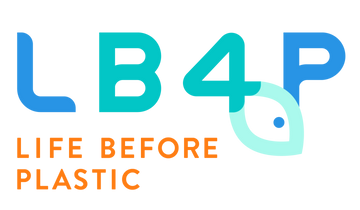Did You Know These 7 Everyday Items Contain Plastic?
Hidden plastics are everywhere, how can we avoid them?
Written by Charlie Gill. Last updated 07/01/2024.
Estimated reading time: 5 minutes
When we first set up our plastic-free shop, we wanted to share our eye-opening findings as far and wide as possible. I remember telling friends that most tea bags contained plastic and their response was absolute amazement.
In truth we are surrounded by plastic. And it's not just the obvious plastic water bottles or single-use food packaging, hidden plastic is everywhere. In this article, we'll share some of the items that contain plastic and how you can avoid them.

1. Tea bags contain plastic
Yes, that's right. I couldn't believe it either but tea bags are sealed together using a plastic-based glue. That means that when you are drinking tea, you are potentially drinking very small micro-plastics. And that tea bag you've just popped in the food waste? It will never fully compost!
Don't worry too much as there are some great plastic-free tea alternatives. There are now a host of tea bags minus the plastic, or why not stick to the traditional and excellent-tasting loose tea combined with a tea strainer.
2. Chewing gum is not plastic free
Whilst in the past chewing gum was made from tree sap, we are now chewing plastic. The plastic used to make chewing gum is a polymer, it is this ingredient that helps the gum to be stretchy and sticky. Now think of all those times you swallowed your chewing gum, slightly scary to think about the impact that plastic may have had to your body.
Luckily, there are now different variety of plastic-free chewing gums, many made from the original tree sap so you can rest assured you're not chewing on plastic.
3. TetraPaks contain a thin layer of plastic
TetraPaks are a useful packaging material, as they are lightweight and predominately made from paper. Yet, though lots of plant-based milk alternatives are packaged in TetraPaks, they do contain a thin layer of plastic. This causes a problem with recycling as not every waste management facility can process these.
If you are using TetraPaks for your milk alternative, we recommend checking with your local milk provider as many are now also delivering oat milk in glass bottles which can be returned and reused.
4. Car tyres are another hidden plastic
Car tyres are made of both natural rubber and a plastic polymer, this means that whilst driving, tiny micro-plastics are shed from the tyres and end up washing down our drains, into our rivers and oceans. In fact, one report claims that in the UK vehicle tyres are responsible for generating 68,000 tonnes of micro-plastics a year.
Our best recommendation for avoiding this? Walk. We know it's not possible for every trip, but do think twice about heading out in your car, or even swap to a bicycle which has less surface area on the tyres and will contribute less to this figure.

5. Metal jar lids are not plastic-free
Who knew that the metal lids on glass jars are not 100% made from metal! Typically a glass jar lid is made from steel with a polyethylene lining. The good news is that these lids can still be recycled. The plastic is burnt from the metal, though it does mean that the plastic fumes are let out into the atmosphere. This is important to remember as plastic is made from oil which will release carbon.
Once you've purchased a glass jar, try to reuse these over and over again. We use ours for all sorts from food storage containers to vases. The opportunities are endless!
6. Cigarette filters contain plastic
The filters or butts from a cigarette are made from a cellulose type of plastic. When disposing of these filters, make sure to pop them in a bin and not to leave them in the environment. After a cigarette has been smoked, the butt will not decompose and will also contain the harmful tar from the tobacco.
If it is an option for you, the best solution to reducing your plastic intake is to quit smoking.
7. Plasters are not compostable
Plasters are made from both the gauze for the wound and a sticky backing. It is this backing that contains plastic. You can see this more clearly when you look at water-proof bandaids. The shiny surface is often a good sign of something containing plastic. And it's not just the plaster itself. Each plaster is packaged in its very own sterile plastic wrapper. None of these items being compostable.
The good news is that there is an alternative. It's now possible to get plastic-free compostable plasters which compost at the same rate as an orange peel!
Conclusion
If nothing else, learning all of this information has taught us to do a little more research before assuming that something is plastic-free and safe for us to use. Plastic pollution really is everywhere and hidden plastics are lurking around in our everyday items. But that does not mean we have to accept it!
Making the switch to plastic-free products is one easy way to reduce your plastic footprint. Another is to raise awareness by speaking to others and helping them make reductions to their everyday hidden plastics.
Are there any other hidden plastics we've missed from the list? Let us know in the comments.
At Life Before Plastic, we will always provide free content for you to enjoy. If you would like to support us you can buy us a virtual coffee.
Some of the links in this post are affiliate links, which means if you choose to make a purchase, we will earn a small commission. This commission comes at no additional cost to you.

